Fraud, waste, and abuse (often called FWA) aren’t just compliance buzzwords—they’re real issues that cost the U.S. healthcare system billions of dollars every year. According to a study published in BMC Public Health, medical fraud and abuse account for an estimated 3% to 15% of total healthcare expenditures globally each year. More importantly, they can damage patient trust, compromise care, and put providers at risk of penalties or even losing their licenses.
Nurses, often on the frontlines of patient care, are uniquely positioned to spot red flags early. Whether it’s a billing error, an unusual patient pattern, or a documentation issue, nurses play a critical role in keeping healthcare systems honest, safe, and patient-focused.
This blog breaks down the top warning signs every nurse should watch for when it comes to FWA—and what to do when something doesn’t look right.
Understanding Fraud, Waste, and Abuse
Before diving into the red flags, it’s important to understand the differences between these three terms:
- Fraud – Intentional deception for personal or financial gain. Example: billing for services never provided.
- Waste – Overuse of services or careless practices that result in unnecessary costs. Example: ordering tests that aren’t medically necessary.
- Abuse – Practices that aren’t exactly fraudulent but still result in improper payments. Example: upcoding to receive higher reimbursements.
While the motivations may differ, the impact is the same—higher costs, more stress for staff, and less focus on patient care.
Red Flags Nurses Can’t Ignore: Spotting Fraud, Waste, and Abuse

Red Flag #1: Suspicious Billing Patterns
One of the most common signs of fraud, waste, and abuse is unusual billing activity. Nurses may notice:
Services being billed that weren’t actually provided.
Duplicate billing for the same service or medication.
Billing for a higher-level service than what was delivered (known as “upcoding”).
Why it matters: These practices not only inflate costs but also put the entire organization under scrutiny, often leading to audits or penalties. Nurses reviewing patient records or reconciling documentation can be the first to spot these discrepancies, making them a critical line of defense against fraud, waste, and abuse.
Red Flag #2: Overuse of Services or Tests
Sometimes, providers may order excessive or unnecessary procedures, lab tests, or medications. While not always intentional, this falls under fraud, waste, and abuse.
Signs nurses should watch for include:
Repeated diagnostic tests with no clear medical justification.
Prescriptions for unusually large quantities of medication.
Frequent use of expensive services when lower-cost alternatives exist.
Why it matters: Beyond financial waste, overuse can expose patients to unnecessary risks, such as radiation from repeated scans or side effects from unneeded medications.
Red Flag #3: Inconsistent or Altered Documentation
Documentation is the backbone of patient care and billing. When records don’t add up, it’s a clear warning sign.
Watch out for:
Medical records that don’t match the care provided.
Sudden changes in patient notes without clear explanation.
Identical “copy-and-paste” documentation across multiple patients.
Why it matters: Poor documentation can signal intentional fraud, but even if it’s just sloppy record-keeping, it opens the door to compliance violations and denied claims.
Red Flag #4: Patient Behavior That Raises Concerns
Sometimes, fraud isn’t on the provider side—it comes from patients. Nurses may notice:
Patients seeking prescriptions for controlled substances without clear medical need.
Repeated requests for early refills.
“Doctor shopping” patterns, where patients visit multiple providers for the same issue.
Why it matters: These behaviors often indicate drug diversion or misuse, which puts patient safety and the practice’s compliance at risk.
Red Flag #5: Pressure to “Look the Other Way”
One of the most concerning red flags is when staff feel pressured to ignore suspicious activity. This could be:
A colleague asking a nurse to sign off on incomplete documentation.
A supervisor discouraging questions about billing practices.
A culture where speaking up is frowned upon.
Why it matters: A culture of silence allows fraud, waste, and abuse to grow unchecked. Nurses must feel empowered to raise concerns without fear of retaliation.
Red Flag #6: Unusual Provider or Vendor Relationships
Fraud doesn’t always happen inside the hospital walls. Sometimes, it involves external vendors or partnerships.
Examples include:
Overpriced supply contracts with questionable vendors.
Referrals being sent only to certain facilities without patient choice.
Providers receiving financial incentives for referrals.
Why it matters: Kickbacks and conflicts of interest are major compliance violations and can land organizations in serious legal trouble.
Red Flag #7: Unexplained Patient Outcomes
When fraud, waste, and abuse occur, patient outcomes often tell the story. Nurses should be alert to:
Patients receiving treatments that don’t match their diagnosis.
Unnecessary procedures leading to complications.
Lack of improvement in patients despite extensive (and expensive) interventions.
Why it matters: Fraud isn’t just about money—it directly impacts patient safety and trust.
What Nurses Should Do When They Spot a Red Flag

Recognizing red flags is just the first step. Knowing how to respond is equally important:
- Document What You See – Keep clear, accurate notes of the concern.
- Follow Chain of Command – Report to your supervisor, compliance officer, or designated reporting system.
- Protect Patients First – If immediate harm is at risk, escalate quickly.
- Know Your Rights – Nurses are protected under whistleblower laws and should not fear retaliation for reporting concerns.
Why Ongoing Training Matters
Fraud, waste, and abuse schemes evolve constantly, and without regular refresher training, even seasoned professionals can miss the warning signs. That’s why refresher courses are so important—they keep staff sharp, informed, and confident in spotting issues early. Training also reinforces the idea that FWA isn’t just a compliance problem—it’s a patient safety and trust problem. When nurses understand the bigger picture, they’re more motivated to speak up and act.
Conclusion: Nurses Are the First Line of Defense
Fraud, waste, and abuse drain resources, compromise care, and damage trust. But with nurses on the frontline, healthcare organizations have powerful allies in preventing these issues. By staying alert to red flags—like suspicious billing, overuse of services, inconsistent documentation, and patient behaviors—nurses can protect both their patients and their organizations. And with ongoing refresher training, healthcare teams can stay one step ahead, ensuring that every dollar is spent wisely and every patient receives the right care at the right time.
Every red flag caught is a step toward safer, more ethical, and more sustainable healthcare.
Take the Next Step
Ensuring compliance, boosting efficiency, and fostering trust begins with well-prepared staff. Our customized, free course development program helps large healthcare teams stay compliant, sharpen their skills, and build a culture of integrity in patient care. Enroll your team today and safeguard your organization’s future—while empowering your nurses to lead the charge against fraud, waste, and abuse. Click here.



